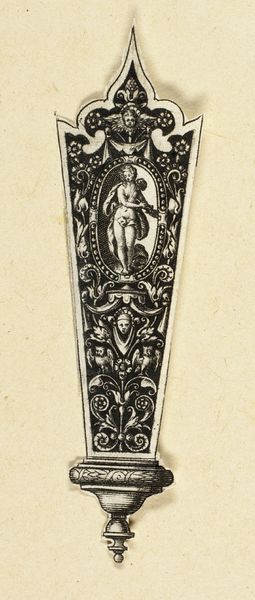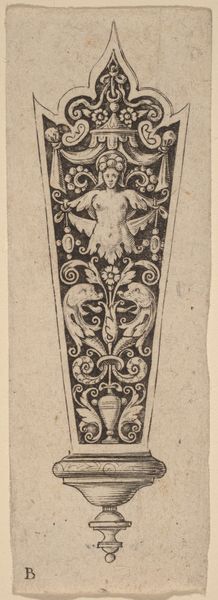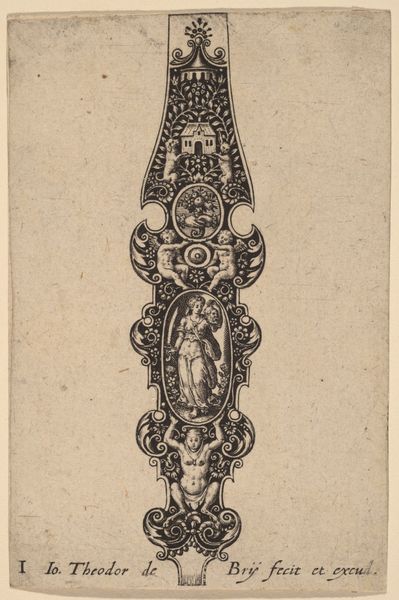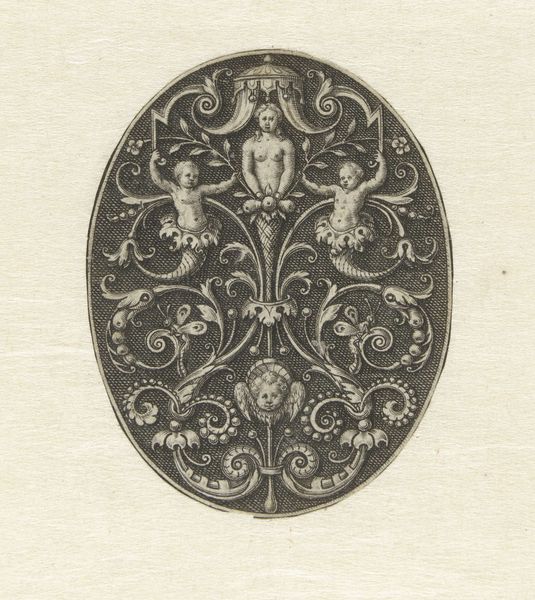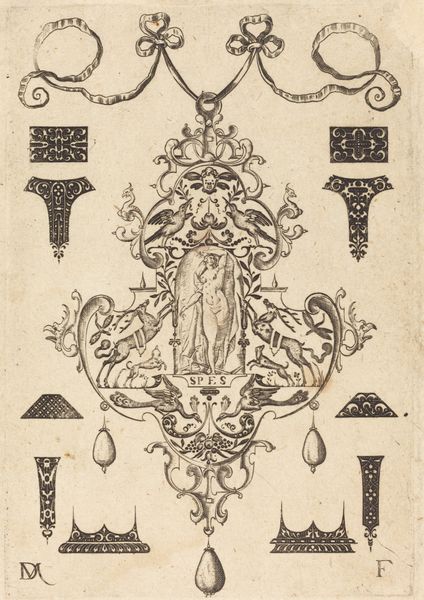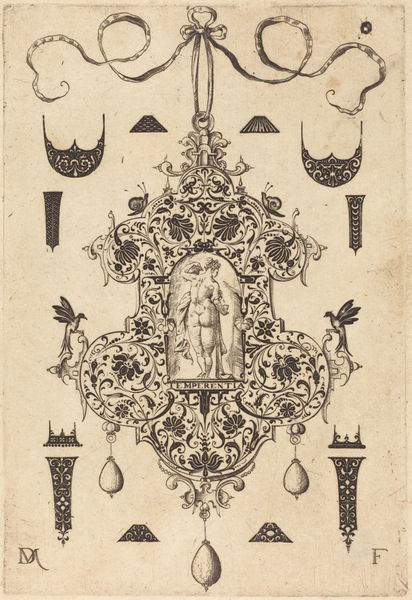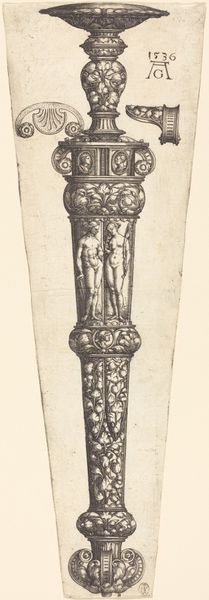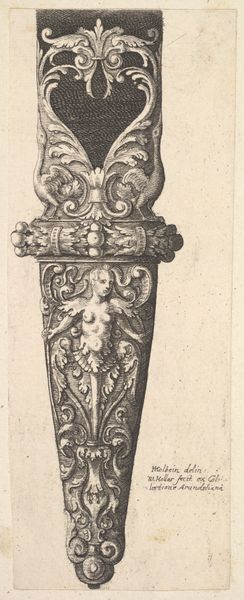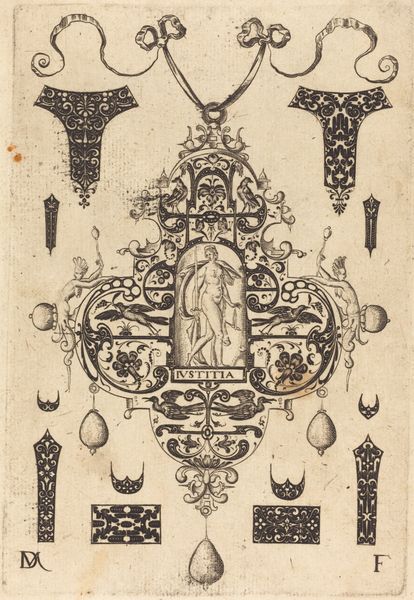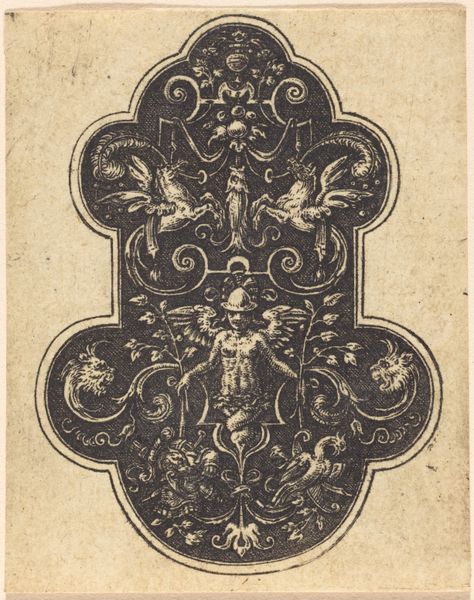
drawing, print, paper, engraving
#
drawing
#
historical design
# print
#
figuration
#
paper
#
form
#
11_renaissance
#
line
#
engraving
Dimensions: 90 × 22 mm (image/sheet, trimmed within platemark)
Copyright: Public Domain
Theodor de Bry made this ornamental design for a knife handle in the late 16th century, likely as an engraving. The image is filled with motifs drawn from classical antiquity, reflecting a broader trend in European art at the time. The image creates meaning through its visual codes, cultural references, and historical associations. De Bry, who was active in what is now Belgium and Germany, was part of a culture that saw itself as the inheritor of ancient Greek and Roman civilization. This is evident in the figure of a classical goddess as well as in the vase and vegetal scrollwork. It appears that this kind of imagery may have been used as a means of asserting power and legitimacy. Knife handles such as this one, produced during a period of increasing global trade, would have been commodities as well as works of art. This design reflects the social structures of its time, particularly the patronage of wealthy elites. In order to fully understand an artwork like this, it’s important to look at historical sources that can shed light on its original context. Research into the artist's life and the cultural milieu in which he worked are essential.
Comments
No comments
Be the first to comment and join the conversation on the ultimate creative platform.
